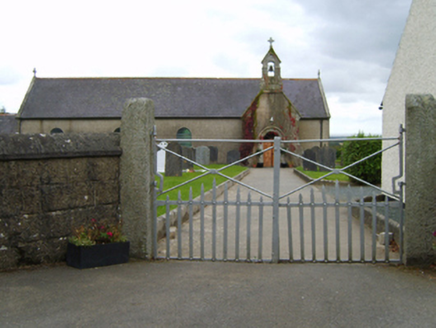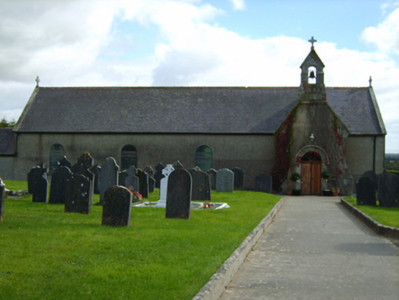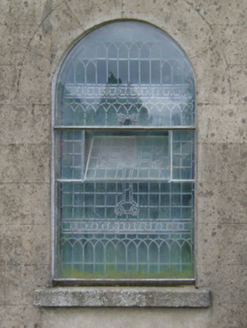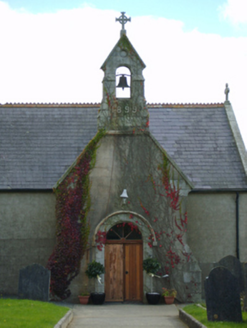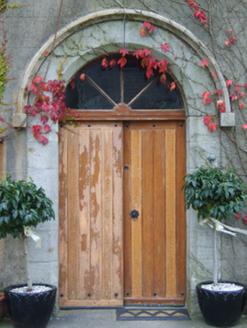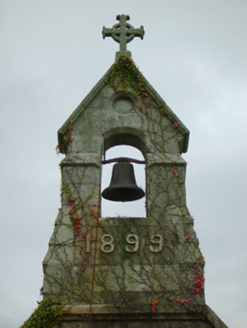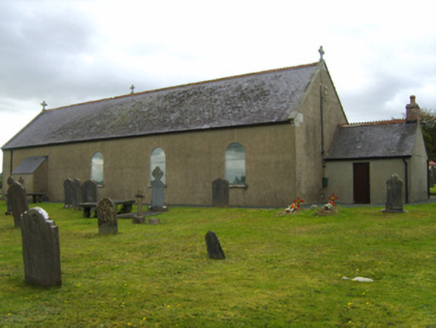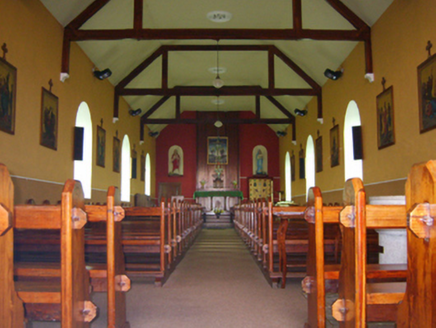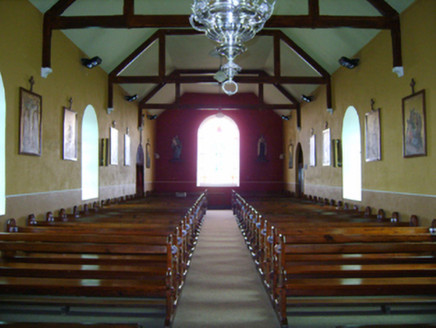Survey Data
Reg No
15700304
Rating
Regional
Categories of Special Interest
Architectural, Artistic, Historical, Scientific, Social, Technical
Previous Name
Saint Mary's Catholic Church
Original Use
Church/chapel
In Use As
Church/chapel
Date
1800 - 1837
Coordinates
316921, 169826
Date Recorded
26/09/2007
Date Updated
--/--/--
Description
Detached four-bay single-storey single-cell Catholic church, extant 1837, on a rectangular plan with single-bay full-height gabled projecting porch (south-west). "Improved", 1899, producing present composition. Renovated, 1966, with sanctuary reordered. Pitched slate roof with crested terracotta ridge tiles, cut-granite coping to gables on cut-granite "Cavetto" kneelers with Cross finials to apexes, and cast-iron rainwater goods on rendered eaves retaining cast-iron downpipes. Part creeper- or ivy-covered rendered, ruled and lined battered walls. Round-headed window openings with cut-granite sills, and concealed dressings framing storm glazing over fixed-pane fittings having stained glass margins centred on leaded stained glass panels. Round-headed door opening (porch) with threshold, and cut-granite surround having chamfered reveals with hood moulding on monolithic label stops framing timber boarded double doors having fanlight. Full-height interior open into roof with central aisle between timber pews, paired stations between stained glass windows (1936), tessellated glazed terracotta tiled stepped dais to sanctuary (north) reordered, 1966, with turned timber balusters supporting carved timber communion railing centred on stepped "predella" supporting timber panelled altar, and exposed Queen Post timber roof construction on "Cavetto" corbels with polygonal vaulted ceiling centred on "Acanthus"-detailed ventilation roses. Set in landscaped grounds with cut-granite monolithic piers to perimeter supporting spear head-detailed flat iron double gates.
Appraisal
A church representing an integral component of the early nineteenth-century ecclesiastical heritage of north County Wexford with the architectural value of the composition, one clearly showing the hallmarks of a period of construction coinciding with the gradual dismantling of the Penal Laws in anticipation of the Roman Catholic Relief Act, 1829, suggested by such attributes as the elongated rectilinear "barn" plan form, aligned along a liturgically-incorrect axis; and the "arcaded" profile of the openings underpinning a streamlined Romanesque theme: meanwhile, aspects of the composition, in particular the eye-catching bellcote embellishing the roofline, illustrate the continued development or "improvement" of the church at the turn of the twentieth century. Having been well maintained, the elementary form and massing survive intact together with quantities of the original fabric, both to the exterior and to the interior reordered (1966) in accordance with the liturgical reforms sanctioned by the Second Ecumenical Council of the Vatican (1962-5) where contemporary joinery; restrained stained glass; and encaustic tile work, all highlight the modest artistic potential of the composition: meanwhile, an exposed timber roof construction pinpoints the engineering or technical dexterity of a church making a pleasing visual statement in a rural village setting.
